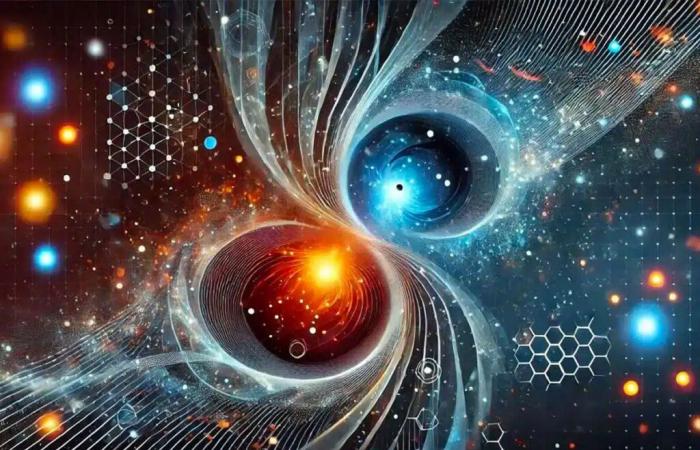
Professor Jonathan Oppenheim and his team at UCL propose a bold theory called “postquantum theory of classical gravity”. Unlike previous approaches, this theory suggests that space-time could remain classicalnot subject to the constraints of quantum theory. Instead of modifying space-time, the researchers propose adjusting quantum theory to account for an intrinsic unpredictability mediated by space-time.
This new approach implies that space-time would undergo random and violent fluctuationsexceeding the predictions of quantum theory. These fluctuations, if measured with sufficient precision, would make the apparent weight of objects unpredictable. To test this theory, the researchers propose a revolutionary experiment aimed at detecting mass fluctuations over time.
Implications and experimental challenges
Postquantum theory has implications that go well beyond reconciling quantum mechanics and general relativity. In particular, it offers a potential solution to the famous black hole information paradox. According to standard quantum theory, information cannot be destroyed. In contrast, general relativity suggests that once an object crosses the event horizon of a black hole, it becomes inaccessible.
The new theory offers a unique perspective, suggesting that fundamental break in predictability inherent in space-time allows the destruction of information, thus resolving this long-standing paradox. Furthermore, it eliminates the need for the controversial “measurement postulate” in quantum mechanics, providing a natural explanation for the location of quantum superpositions.
Proposed experiences and future perspectives
To validate their theory, UCL researchers propose several crucial experiments:
- Detection of random mass fluctuations
- Verification of “gravitationally mediated entanglement”
These experiments, although complex, could revolutionize our understanding of the fundamental laws of nature. Professor Sougato Bose, an expert in this field, believes that we could get answers within the next 20 years.
Here is an overview of the main differences between current theories and the new approach:
| Aspect | Current theories | New postquantum theory |
|---|---|---|
| Nature of space-time | Quantum | Classic |
| Fluctuations | Limited | Violent and random |
| Information paradox | Unresolved | Potentially resolved |
Towards a new era of physics
This innovative theory paves the way for a new era of scientific exploration. It challenges our fundamental conceptions of the universe and promises to revolutionize our understanding of gravity and quantum mechanics. Professor Oppenheim underlines the importance of this progress: “Now that we have a coherent fundamental theory in which space-time is not quantized, anything is possible.”
The future of physics looks more exciting than ever. This postquantum theory could not only solve long-standing puzzles, but also open up new avenues of research and technological innovation. As scientists embark on this exciting quest, the world eagerly awaits results that could redefine our understanding of the universe.
https://www.ucl.ac.uk/





